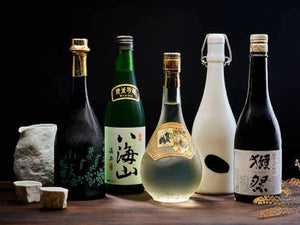
What is the Best Temperature to Drink Sake at?
Enjoying Japanese Sake at Various Temperatures
The beauty of Japanese Sake lies in its versatility of being enjoyed at different temperatures. When stepping into the world of sake, the common question arises: "Should this sake be chilled or warmed?"
It depends on the type of Sake. Fruity and light styles like Ginjo and Dai-ginjo are best served cold, typically at 40 - 50°F (5-10°C), while savory styles like Junmai-Shu are often enjoyed hot, ranging from 104 - 122°F (40-50°C). However, the beauty of Sake is that it can be appreciated at a range of temperatures, from 40 - 131°F (5 to 55°C).
Light and Clean Style – Pasteurized
This style, including Honjozo (本醸造) and Futsu Shu (普通酒), is characterized by its dry, smooth, clean, and light body. It performs well across a range of temperatures and can be enjoyed hot or cold.
Light and Clean Style – Unpasteurized
This style, including Nama zake, Nigori zake, Nama Chozou, and Namazume Shu, offers fresh aromas and flavors due to being unpasteurized. Similar to milk, it's best served cold, stored in the fridge, and consumed promptly.
Savory Style
Comprising Junmai Shu, Kimoto, and Yamahai, this style shines when served cold or at room temperature. Warming it enhances its richness and savory character, with flavors reminiscent of steamed rice and grains.
Fragrant Style
Ginjo and Daiginjo, known as the 'top-class Sake', are fruity, fragrant, and light-bodied. Typically served cold, warming them risks compromising their delicate aromas.
Aged Style
Aged Sake boasts rich, fragrant aromas and flavors, similar to whiskies and other spirits. Best enjoyed at room temperature, it offers notes of dried fruits, almonds, butter, and cinnamon.

